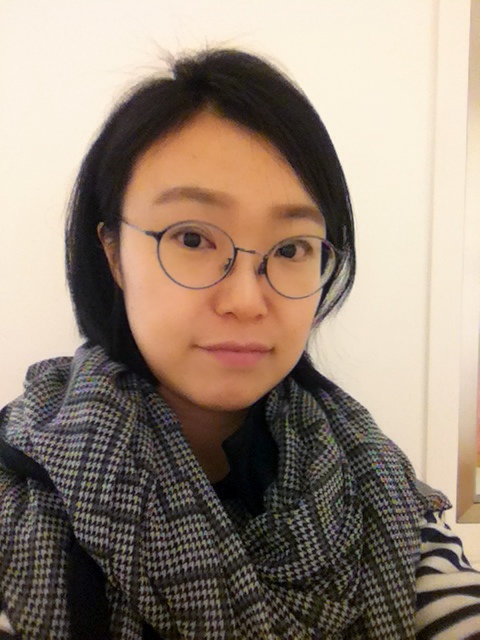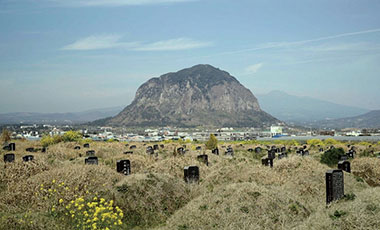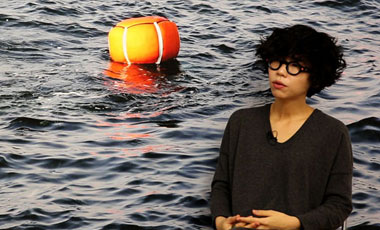“. . . .craft is often perceived as second-class next to design, likely due to its historical, manual nature, as opposed to the intellectual connotation attributed to design. . . . Conversely, design seems to be understood in limited terms as aestheticizing, high-end or labor-intensive products. These conservative views cannot be changed by curators alone, but should be addressed by a larger community in a way that involves academic, business, and political partners. There should be a deeper understanding of the numerous inherent values found in craft and design. Mass-produced objects that one uses on a daily basis in a familiar environment are also designed objects; the disappearing crafts should be valorized by encouraging their integration into contemporary design. However, craft will need to adapt to current society’s needs, materials, and manufacturing processes. It is also interesting to see historical pieces next to their contemporary reinterpretations and see what, how, why shape, decorative pattern, materials, etc., have evolved in such a way.”
-

- Rosalie Kim / Curator, Korean Gallery, Victoria and Albert Museum A native of Belgium, Rosalie Kim studied architecture and philosophy at Belgium’s UCL and the University of Turin in Italy. She has worked at architectural offices in Seoul, Brussels, Antwerp, and Paris. In addition, she has lectured on architecture at Kingston University in Britain and earned master’s and doctoral degrees from The Bartlett at University College London. Her thesis The Hyphenation of the Void was nominated for the 2012 ‘RIBA President’s Awards for Outstanding PhD Research’. Since November 2012, she has worked as the Samsung Curator of Korean Art at the Victoria and Albert Museum in London..
The Storytelling inspired by Craft and Design
London’s Victoria and Albert Museum (V&A) is the world’s largest art and design museum, established in 1852 after the success of the Great Exhibition hold in Hyde Park in 1851. Its collection includes some five million pieces of pottery, furniture, accessories, paintings, and more, along with storage facilities for researching this collection and sharing its items with the public, a total of 145 galleries, and a children’s museum. One component of the V&A is its Korean Gallery, a sort of large research space sponsored by Samsung Electronics UK. We sat down to hear from the manager of this collection, Dr. Rosalie Kim.
 ©Rei Moon/Moon Ray Studio
©Rei Moon/Moon Ray Studio
Chae Young (C) : I’d like to hear more about the Victoria and Albert Museum (V&A) and your role there.
Rosalie Kim (K) : The V&A was established in 1852 after the enormous success of the Great Exhibition hold in Hyde Park in 1851. Its purpose was to introduce outstanding crafts and designs from all over the world to British manufacturers, designers, and members of the public, and to educate and inspire them. Today the V&A is the world’s greatest museum of art and design, and remains faithful to its Victorian aspirations. As the Samsung Curator of Korean Art, I look after the Korean collection and champion Korean art and design through creative displays, events and acquisitions
C: You were an architect before becoming curator. With all your experience lecturing at universities and working at architectural offices in Europe and Korea, I’m curious about the reason why you chose to become a curator.
K : I was born and brought up in Europe, but my background is strongly rooted in Korean culture. Looking back, I think growing up in a Western environment at a time when no one heard of Korea was seminal for me. Answering constant questions about my country of origin became second nature, while my architectural education enabled me to cultivate my affection for a wide range of disciplines, including art, craft, and design. So I naturally developed a desire to work in between cultures, actively engaging in artistic development and cultural exchange between Europe and Korea. So the timing was good when the position for the Samsung Curator of Korean Art opened at the V&A as I finished my doctorate.
C : What kind of influence did your past have on your work as a curator?
K : Architecture juggles with the complex interactions of numerous fields – art, design, environment, engineering, law, economy, sociology, politics, and so forth – within a given time-frame, budget, and clear objective. On top of providing a strong visual sense, architecture teaches you to develop a critical mind and a creative thinking process, as well as to formulate issues and solutions in a visual, synthesized manner. This methodology can certainly be applied beyond the realm of architecture, and it is not surprising to see architects being regularly solicited for advice on problems arising in other professions. So my architectural experience has been very useful in my current work as a curator.
C : There must be differences or difficulties in collecting Korean items for a museum in another country, as opposed to one in Korea. How do you build the V&A Korean collection?
K : Korean objects, including lacquerware, silverware, and examples of embroidery, first arrived in the museum in 1888, just a few years after diplomatic relations were established between Korea and Britain in 1883. At the turn of the twentieth century, a growing number of similar gifts from Westerners traveling or living in Korea, coupled with sensible purchases by the museum, enabled the V&A to swiftly build and strengthen its Korean collection. Since the opening of the Korean gallery in 1992, the main focus of collecting has been on contemporary art, craft, and design. Nevertheless, a number of important historic objects have also been acquired, like Yi Sang-Beom’s Winter (1963), a landscape painting that was purchased in 2013.
It is important to note that the V&A is not an archaeological museum, but a museum of art and design, and although some objects are ancient to the eye of a present-day observer, they were revolutionary at the time of acquisition. Likewise, I think it is important to build a Korean collection that reflects the burgeoning contemporary design scene in Korea, showcasing a fresh and innovative take on traditional craft and cultural heritage.
At the V&A, curators from various departments gather regularly to discuss and share their knowledge and experience about common areas of interest. I participate in the Contemporary Curators Group, whose lively discussions help to ground the Korean collection in a broader contextual background and enable me to engage with a wider range of materials for the Korean collection, including book art, photographs and digital arts.
 Victoria and Albert Museum, London ©Victoria and Albert Museum
Victoria and Albert Museum, London ©Victoria and Albert Museum
C : The Korean Gallery is part of V&A, but it has a different sponsor. Has this kind of relation necessitated coordination of opinions or caused any issues between the V&A and the sponsor (Samsung Electronics UK).
K : Several curators in the Museum are supported by external funding bodies, so I am not an isolated case. With ongoing governmental cuts in the art sector, this type of support is certainly crucial for museums. So the generous sponsorship from Samsung Electronics UK has allowed the V&A not only to establish a first-ever full-time curator position for Korea, but also to expand our Korean collection with new purchases, undertake research, and create public and academic events on Korean art and design. I am grateful to the V&A and Samsung for their open-mindedness and their trust in my abilities as a curator. In return, I make sure that their funding is used to the best of the Museum’s interest.
C : There seems to be different approaches to the V&A’s permanent galleries and its temporary exhibitions. The permanent galleries, which are collection-focused, mainly have a very classical atmosphere, while exhibitions like David Bowie (2013) and Hollywood Costume (2012) drew a lot of attention from public. Can you talk about the process and methods the V&A’s curators use to plan exhibitions?
K : The permanent galleries highlight our remarkable collections of historic and contemporary art and design, and are divided broadly into two types. Some are designed to show the visual and intellectual relationship between objects from the same country or historical period, like the Korean Gallery or the Medieval and Renaissance Galleries, while others focus on one particular medium, such as ceramics or jewelry, and reveal developments in forms, function, and technique. More recently the Museum inaugurated the “Rapid Response Gallery” to showcase objects that reflect current global events, technological advances, political changes, or pop cultural phenomena that affect the world of design and manufacturing.
Our temporary exhibitions tend to focus on more specific narratives; for these, we also borrow objects from public and private collections around the world. So it cannot be said that temporary exhibitions are focused on contemporary subjects, while the permanent galleries are focused on ancient objects. There are also temporary exhibitions on historical themes, like Masterpieces of Chinese Paintings, 700-1900 (2013_2014), or Constable: The Making of a Master (2014).
C : In Korea, it doesn’t seem like there’s a lot of interest in or audience for craft exhibitions and museums. What kind of things do you think planners ought to do to increase attendance and interest? Could you talk about some examples of education and event programs at the V&A?
K : This is a vast question for which I don’t think there is a magic formula. I can only offer my opinion. In Korea (and it is not the only country), craft is often perceived as second-class next to design, likely due to its historical, manual nature, as opposed to the intellectual connotation attributed to design. But I feel that the boundary between craft and design is not as clear-cut. Conversely, design seems to be understood in limited terms as aestheticizing, high-end or labor-intensive products.
These conservative views cannot be changed by curators alone, but should be addressed by a larger community in a way that involves academic, business, and political partners. There should be a deeper understanding of the numerous inherent values found in craft and design. Mass-produced objects that one uses on a daily basis in a familiar environment are also designed objects; the disappearing crafts should be valorized by encouraging their integration into contemporary design. However, craft will need to adapt to current society’s needs, materials, and manufacturing processes. It is also interesting to see historical pieces next to their contemporary reinterpretations and see what, how, why shape, decorative pattern, materials, etc., have evolved in such a way.
The V&A engages with its audience in various ways aside from its regular exhibitions, guided tours, courses, and lectures. The Museum hosts creative workshops for young students, where they learn the basics of the design process with simple hands-on projects led by young designers. Object handling sessions offer professionals or university students the opportunity to feel historical objects for themselves and learn about them under the curator’s guidance. The Museum is also filled with real historical objects like ceramics that any visitor can touch, and many objects are accompanied with a “making process” or contextual videos. The V&A has also initiated “Friday Late” (late opening on Fridays), which is a concept that other museums have been quick to adopt. Every last Friday of the month, the Museum hosts a large pop-up event that is centered on a contemporary theme, with workshops, performance, talks, and installations by young, emerging artists and designers. This is a fun and relaxing way of engaging the public with our collections. In May 2014, the V&A hosted the first “Friday Late: Korea” on the theme of “Ogam” (the five senses), which proved to be hugely successful. It featured a K-pop DJ, a talk with television miniseries(K-drama) director Yun Seok-Ho, a reading by Nobel Prize nominee Ko Un, a Samulnori performance, and workshops with Shin Mee-kyoung, Kang Soo-jin, Sung Jang, and Jeon Jin-hyun, along with installations or demonstrations by Kim Been, Park June-bum and by Jo Eun-hee.
 Korean Gallery at the Victoria and Albert Museum ©Victoria and Albert Museum
Korean Gallery at the Victoria and Albert Museum ©Victoria and Albert Museum
C : In 2012, Arts Council Korea and the British Council co-sponsored an exchange program for Korean and British curators, and I had the chance to meet a person in charge of the international affairs at the V&A. The museum seems very committed to promoting its different exhibitions abroad. What are your thoughts on the recent V&A exhibitions in Korea? As a V&A curator, are there are any exhibitions or research projects you’d like to organize in partnership with Korean institutions or curators?
K : So far, three Museum exhibitions have been sent to Korea. The World Ceramics: Masterpieces from the V&A was shown at the Korea Foundation Cultural Centre in Seoul in 2008. Princely Treasures: European Masterpieces 1600–1800 from the Victoria & Albert Museum was exhibited at the National Museum of Korea in 2011, and Owen Jones: Islamic Design, Discovery and Vision was presented at the Goyang Cultural Foundation in 2012. I think these exhibitions give a good overview of the quality of our historical collections, but it tells perhaps less about the wide scope of our exhibitions, just as you mentioned in your previous question.
I think one of the strengths of the V&A is that we’re a museum of art and design that covers both the historical and the contemporary, both the luxurious and the mundane, in a wide range of materials. This enables us to provide a unique, continuous narrative with regard to the design evolution in trend, taste, techniques, and so forth from across the globe. We have wonderful exhibitions on photography, fashion, theater, and performance, as well as exhibitions introducing other cultures like India and Iran, or the annual Jameel Prize, which I personally like very much.
In the future, I hope to actively collaborate with Korean institutions on potential exhibitions, loans, and events to bring the unique charm and beauty of Korean art to Europe. The theme doesn’t necessarily need to be focused on historical treasures or highlights; I want to tell the evolving stories of craft and design in Korea. For instance, I’m fascinated by the simplicity and ingenuity of Joseon domestic life, and I find the design in Korea in the 1960s to 1980s to be very telling of the socio-political context of that period. Korean design history is certainly a subject that I would like to research more. For now, I’m working on building a network for research collaboration on Korean lacquerware.
C : You visited Korea this year to work on a documentary. Could you talk about that project?
K : In autumn, a colleague from Digital Media and I traveled to Korea to shoot various short films to replenish the video contents in our Korean Gallery. We wanted videos that were more in tune with the collection on display, and in the style of videos shown within the Museum.
We initially scheduled to take three videos but wound up with much more materials, thanks to our local contacts who kindly introduced us to other craftsmen and Important Intangible Cultural Properties.
We particularly focused on the lacquer making process (both traditional and contemporary practices), and on filming traditional and contemporary views of Seoul, including Gyeongbokgung Palace, the Huwon at Changdeokgung Palace, and the Jongmyo Shrine. In addition, we collected various interviews, and filmed one on the traditional paper-making process too. These are now being edited, one at a time, and we hope to start showing them, together with relevant objects, in the Korean Gallery by March 2015, and upload their slightly longer versions with sound on the V&A website.
C : I’d like to hear about the 2015 scheduled for the V&A Korean Gallery and your plans for the medium and long terms. What kind of projects are in the making?
K : Next year, the Museum will host three events dedicated to Korea: one academic workshop on hanji (Korean paper) in April, one Chuseok Family Day in September, and the first Korean Artist in Residence starting in October. In parallel, the Korean Gallery will have replenished its video content, together with numerous display rotations showcasing, among other things, photographs, contemporary furniture, and fashion.
In the long run, I would like to work on refurbishing the Korean Gallery, on collaborative temporary exhibitions and publications related to Korean craft and design, and perhaps organizing events like a Korean section in the annual London Design Festival at the V&A, a Korean design competition, or a Korean “Fashion in Motion,” which is a series of live catwalks against the Museum’s beautiful backdrop. The list is endless.

Chae Young / Curator, Whanki Museum
Since 2005, Chae Young has worked as a curator at the Whanki Museum on numerous exhibitions about the artist Whanki Kim, as well as on other contemporary art projects. Her major exhibitions include Whanki Kim and his Contemporaries(2011-14), Whanki Kim and the Beauty of Korea (2012), Art Project Buam-dong(2012), Site Whanki(2011), and Four Methods of Communication through Books(2011-12), a collaboration with the National Library of Korea. She is also enrolled in a doctoral course on Visual Arts at Yonsei University. Her recent research articles include A Study of Yong-jun Kim's Paper on ‘Expressionism’ (2014) and A Study of Feng Zikai’s Cartoons as Adoptions of Eastern and Western Art Forms(2013).


